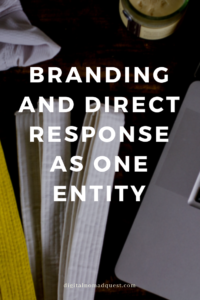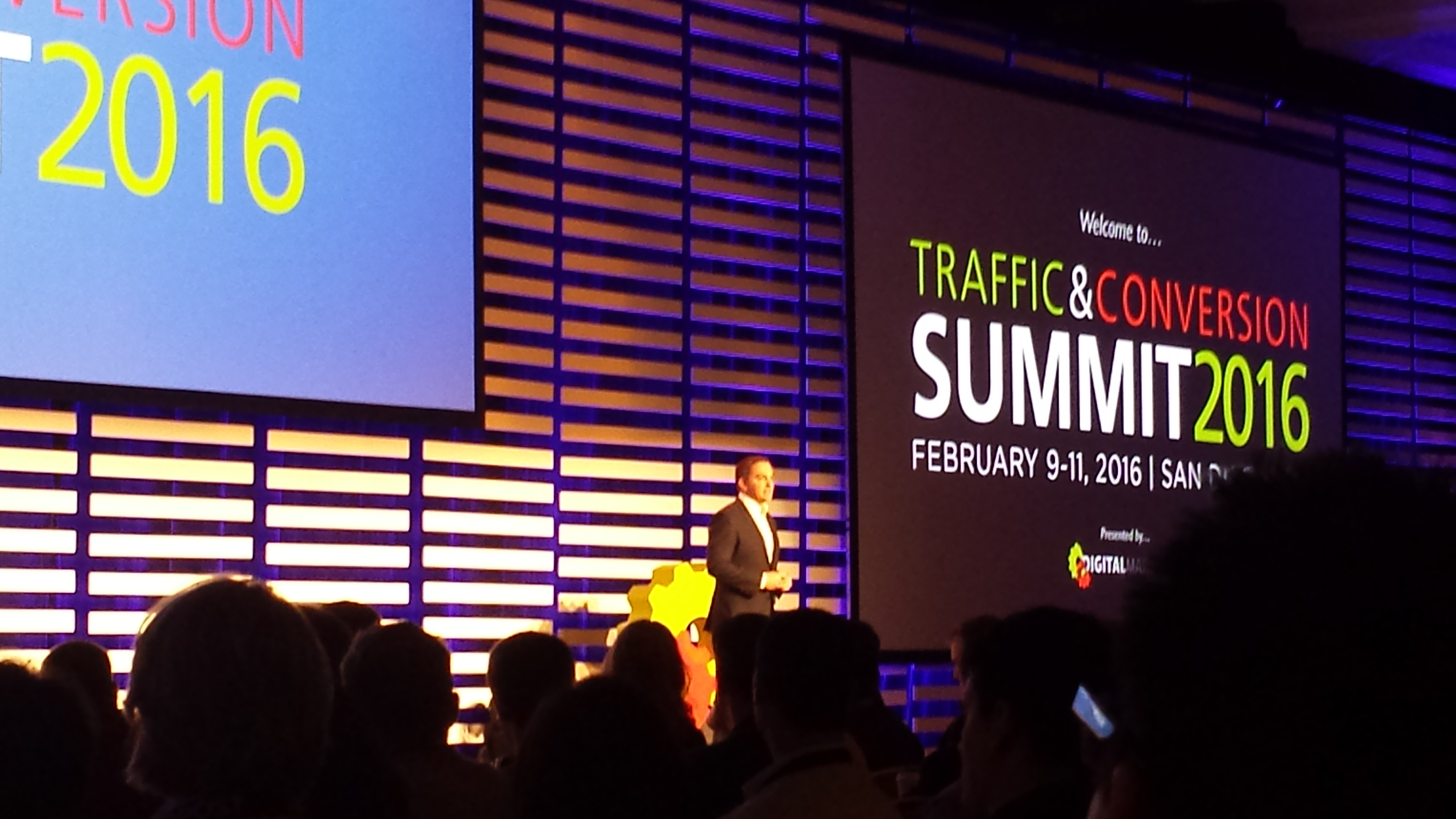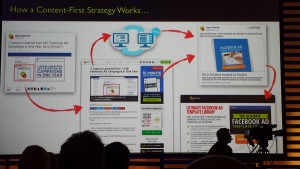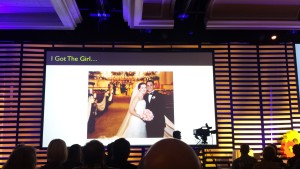As you may already know, I had the privilege of attending the Traffic & Conversion Summit 2016 on a work trip. I started the day listening to Ryan Deiss (Founder & CEO of Digital Marketer) about branding and direct response as one entity. The talk resonated with me so much because it fueled my exact thoughts on the subject, yet it made me angry because I’ve been working for a company that has not recognized branding as a necessity. We’ve only been focusing on direct response: conversions, conversions, conversions! And the CEO of the company (my manager) really doesn’t understand the value of branding as of course it is quite hard to measure in terms of value. Mid last year, we completely tanked our performance and reputation when we became so focused on growth that we had more sales than we could handle. Can you imagine my frustration trying to market a product that was screwing over customers with shitty turnaround times and crappy quality? After trying to ingrain the importance of branding in my manager’s mind, it was just devastating to see it all backfire on us when he wouldn’t listen.
Anyway, #endrant, let’s get into why Ryan thinks in this day and age, branding and direct response need to go hand in hand.
Business Relationships Are Like Friendships
It’s quite common for marketers to want to tell people to BUY, BUY, BUY. When you’re asking someone to buy, you’re asking them to do something for you. But think about your friendships. Do you always ask your friends to do shit for you without giving back to them? No! It’s a mutually beneficial relationship where you want to be around each other and you know you have each other’s backs.
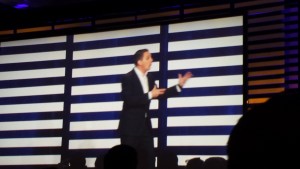
When you’re always asking someone to do something for you, you’re not going to create a relationship that lasts because you’re just annoyingly requesting that one favor each time. Applying this to business, you’re not building strong, long-lasting relationships in which your customers will stay customers forever.
Branding vs. Direct Response
This battle that marketers have about direct response vs. branding needs to end. Direct response marketers in the past have thought of marketers focused on content/branding to be “fluffy” with no substance and no attribution to sales. Honestly, I almost fell for this in the past. I started thinking maybe organic marketing (social media, blogs, etc.) was not crucial enough to move the needle. However, there are many ways in which you can utilize content to provide value to increase return on investment (ROI) and lower cost per acquisitions (CPAs), which is why branding and direct response should be considered one entity.
Ryan claims that the new definition of branding is “anything that makes a deposit into a customer or prospect’s relational equity account.”
On the other hand “selling makes a withdrawal from a customer or prospect’s relational equity”. So if you’re asking from others, you are withdrawing from relational equity. Losing trust is the same. Relating that to the company I’ve been working for, we’ve lost trust by screwing over customers, causing excessive withdrawal from relational equity, and in turn has broken so many ties, losing our top customers and hurting business.
But there is nothing wrong with withdrawing if the funds are available, so if you have built relationships, you CAN still ask your consumers to buy.
Building Relational Equity
So how do you build relational equity with marketing? Here are the 4 ways:
- Make em’ laugh
- Make em’ cry
- Make em’ feel a part of something
- Deliver actual value in advance. Show what you are about. Take a stand on something.
You should always create that relationship before you ask for money. Here’s an example. Ryan’s dad’s car was stuck in the sand. Someone (let’s call him Jack) came by and helped him out, but only if his dad paid him. THAT is selling. Jack requested money first and basically said he wouldn’t help unless his dad paid. And of course, Ryan’s dad was pissed.
Now imagine if Jack pulled Ryan’s dad’s car out of the sand without requesting money. Of course Ryan’s dad would be so grateful he would have offered money. And now imagine Jack insists he didn’t want payment and leaves, and a friend walks by telling Ryan’s dad that Jack owns a restaurant and that he should go check it out. Imagine how much Ryan’s dad would tip Jack at his restaurant and how much he would spread the word for him!
Okay that was a long and probably uncommon case, and you can’t always depend on the kindness of strangers like that. But if you can, that is a pure example of branding and building a relationship.
Fortunately, you can use retargeting to help create this relationship.
So to do this while making conversions:
1. Create some “pull-out-of-sand” content.
2. Use an ad that directs to valuable content for the user instead of directing to a landing page with a lead magnet.
3. Pixel the user on the content
4. Retarget them in the future with ads that send them to the landing page. (If this doesn’t make sense please comment below!)
This method LOOKS expensive, but they proved that using this route improved their total ROI and lifetime value (LTV) – as opposed to using merely direct response campaigns.
The Future of Traffic and Creating a Long Lasting Company
How does this all apply to you? If you’re looking to start a business to become a location independent digital nomad, you’ll need to understand the importance of focusing on the CUSTOMER and on BUILDING RELATIONSHIPS. The goal of marketing is to build relationship equity (and then withdrawing from the relationship equity bank account).
So goal #1: Build a pixeled audience. This is how you deliver value in advance without going broke in the process.
The future of traffic isn’t about who can get the most clicks the cheapest, it’s about who has the most people pixeled. What this means for you is – build your e-mail and retargeting lists!
Make People Happy. Be Customer Centric
Ryan introduced this interesting statistic – less than 6% of total transactions are happening on the internet.
This stat was fascinating to me. Ryan told us about how people criticized Digital Marketer for going offline and not focusing on e-commerce. People said he was stupid to create Traffic & Conversion Summits cause they wouldn’t make much money from them.
But what did Ryan say? “A website is not a business model. It is a location. If most transactions are happening offline, then take your business offline too. Business models are defined by who you serve. Screw focus! At least the way most people talk about it.”
What does he mean by that? Don’t focus on your business model. Focus on your customers. Are you serving them? Stop defining your business by the way you sell, instead define your business by who you serve. Because these businesses last.
This means that once you’ve gotten off the ground, you should offer services that your customers want even if it is outside of your catalog. Even if the services are lower margin, deliver them. Help your people. Engage in conversation instead of making your own. It’s about your customers and winning hearts instead of wallets.
Thoughts?
I loved this speech and concept. I LOVE the idea of always helping the consumer. This presentation pretty much made me 99% ready to leave my job. If they fired me today, I’d be like “I accept”! I think our company can improve and maybe we can get to a state where we’re okay with our customers, but I think the executives ultimately do not have a vision that agrees with my values. I want to help people. I want to be a positive influence and inspire others, and I don’t want to work for a company that is too cheap to fully make that happen.
Ryan’s speech made me even more inclined to execute on my own vision. What are your thoughts on his presentation? Let me know in the comments below!
P.S. Did you know Ryan’s motivation for building a business was to make enough money to buy his fiance/now wife a wedding ring? So cute!
